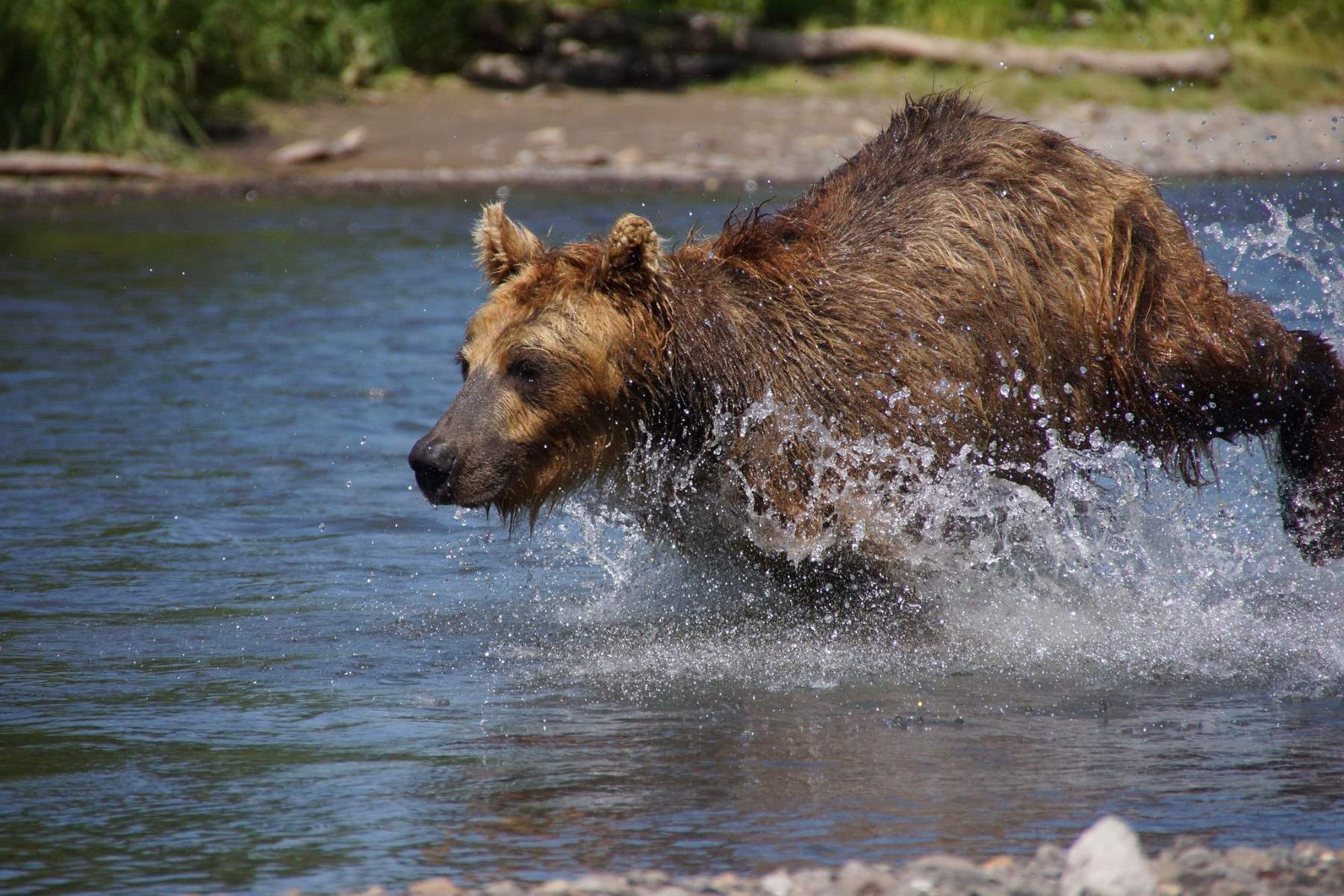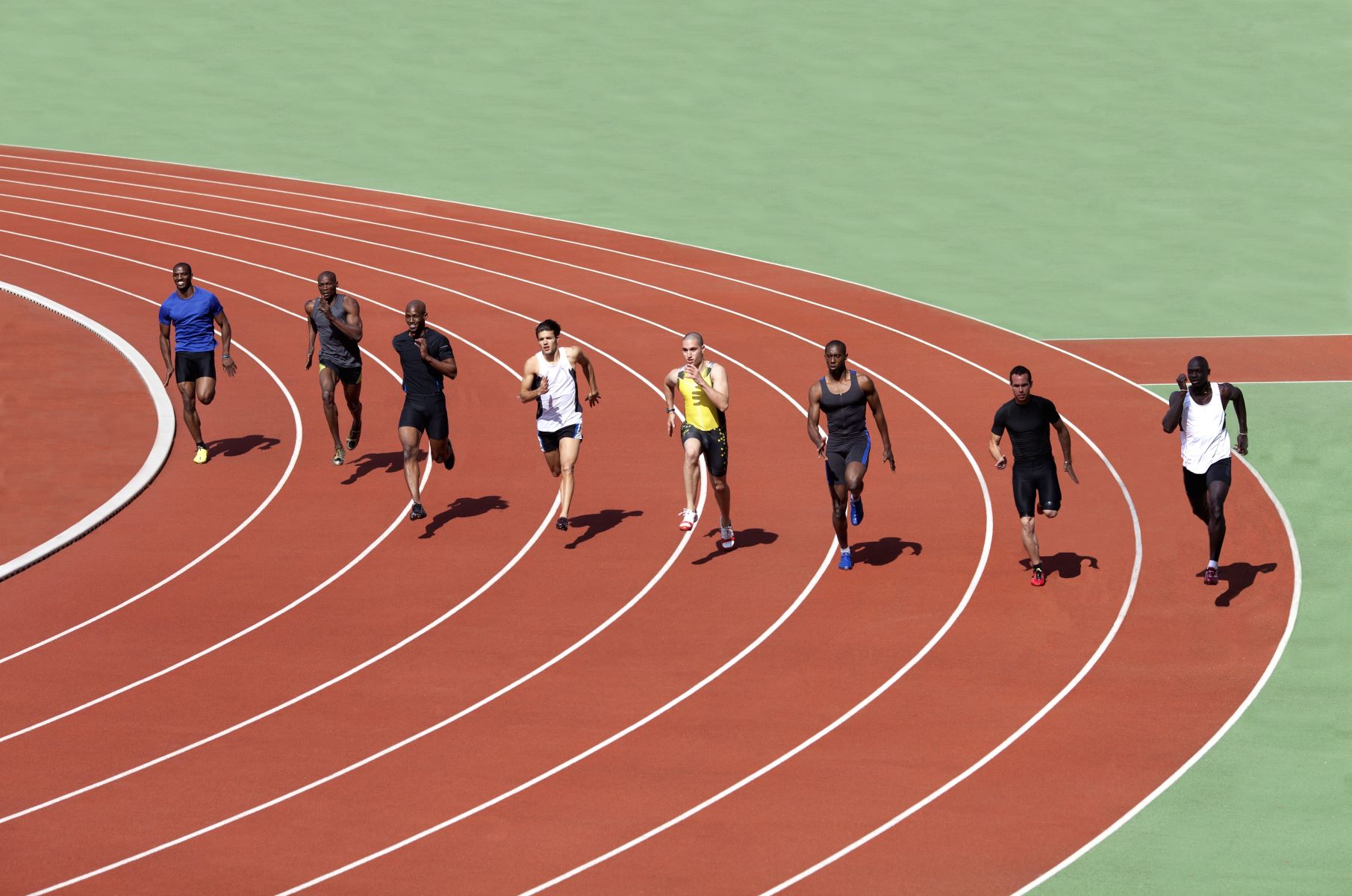Home>Training & Techniques>Running Techniques>5 Animals That Could Outrun You


Running Techniques
5 Animals That Could Outrun You
Published: February 22, 2024
Discover the top 5 animals with incredible running techniques that could easily outrun you. Learn how to improve your running techniques to keep up!
(Many of the links in this article redirect to a specific reviewed product. Your purchase of these products through affiliate links helps to generate commission for Therunningadvisor.com, at no extra cost. Learn more)
Introduction
Have you ever wondered which animals could leave you in the dust when it comes to running? While humans have made significant advancements in speed and endurance, there are several remarkable creatures in the animal kingdom that can outpace even the most athletic individuals. From the sleek and agile cheetah to the swift and enduring pronghorn, these animals possess extraordinary running abilities that have evolved over millennia for survival and adaptation.
In this article, we will explore five fascinating animals that could easily outrun the average human. By delving into the unique characteristics and adaptations of these creatures, we can gain a deeper appreciation for the diverse capabilities found in the natural world. So, fasten your seatbelts (figuratively speaking) as we embark on a thrilling journey to discover the incredible running prowess of these remarkable animals.
Cheetah
The cheetah, scientifically known as Acinonyx jubatus, is a marvel of speed and agility. Renowned as the fastest land animal on the planet, this magnificent feline has captured the imagination of humans for centuries. With its slender build, distinctive black tear marks, and sleek golden coat adorned with black spots, the cheetah is a sight to behold. However, it is the astonishing running capabilities of this predator that truly set it apart.
When it comes to sprinting, the cheetah is in a league of its own. With explosive acceleration and remarkable top speeds, it can reach an astounding velocity of up to 60-70 miles per hour (96-112 kilometers per hour) in just a few strides. This unparalleled acceleration enables the cheetah to cover short distances with breathtaking swiftness, making it a formidable hunter on the African savannah.
The cheetah's incredible running prowess is attributed to a combination of physical adaptations and specialized hunting techniques. Its long, slender limbs, non-retractable claws, and flexible spine work in perfect harmony to deliver exceptional speed and maneuverability. During a high-speed chase, the cheetah's elongated body and powerful muscles propel it forward with unparalleled efficiency, allowing it to swiftly close in on its prey.
Furthermore, the cheetah's keen eyesight and exceptional depth perception play a crucial role in its hunting strategy. When targeting a potential meal, the cheetah locks its focus on the prey, gauging the distance and trajectory with remarkable precision. This acute visual acuity, coupled with its lightning-fast acceleration, gives the cheetah a decisive edge in capturing swift and agile targets such as gazelles and impalas.
Despite its extraordinary sprinting abilities, the cheetah's endurance over long distances is relatively limited. After a high-speed chase, the cheetah requires a period of rest to recover from the intense exertion. This specialization in short bursts of speed aligns with its hunting style, emphasizing rapid acceleration and decisive strikes to secure a meal.
In the natural world, the cheetah's running prowess stands as a testament to the remarkable adaptations that have evolved over millennia. Its unparalleled speed and agility exemplify the intricate interplay between form and function, showcasing nature's ingenuity in crafting a supreme predator optimized for lightning-fast pursuits.
As we marvel at the cheetah's extraordinary running abilities, we are reminded of the awe-inspiring diversity of life on Earth, where each species has honed its unique skills for survival in its respective habitat. The cheetah's sprinting prowess serves as a captivating testament to the boundless wonders of the animal kingdom, inviting us to appreciate and respect the remarkable capabilities of our fellow inhabitants on this planet.
Pronghorn
The pronghorn, often referred to as the American antelope, is a remarkable species renowned for its extraordinary running abilities. Found in the grasslands and deserts of North America, the pronghorn is an iconic symbol of speed and endurance in the animal kingdom. With its sleek build, distinctive white rump patch, and impressive horns, this agile ungulate embodies the essence of swift and graceful movement across the open plains.
When it comes to running, the pronghorn is a true marvel. Renowned for its exceptional speed and stamina, this remarkable creature can reach astonishing velocities of up to 55 miles per hour (88 kilometers per hour) during sustained sprints. What sets the pronghorn apart from other land animals is its remarkable endurance, allowing it to maintain high speeds over long distances. This combination of speed and stamina makes the pronghorn one of the fastest and most enduring runners in the animal kingdom.
The pronghorn's running prowess is a product of evolutionary adaptations finely tuned for survival in its expansive grassland habitat. Its elongated legs, lightweight build, and specialized respiratory system enable it to achieve remarkable speeds while conserving energy. Additionally, the pronghorn's keen eyesight and acute awareness of its surroundings contribute to its ability to navigate diverse terrains and evade potential threats.
In the face of danger, the pronghorn's swift and agile movements serve as a crucial defense mechanism. When confronted by predators such as coyotes or mountain lions, the pronghorn relies on its exceptional speed to outrun and outmaneuver its pursuers. This remarkable ability to escape danger through rapid acceleration and sustained speed has been honed through millennia of evolution, shaping the pronghorn into a master of evasive maneuvers on the open plains.
Furthermore, the pronghorn's running prowess extends beyond mere survival, playing a pivotal role in its mating rituals and social dynamics. During the breeding season, male pronghorns engage in high-speed chases to compete for mating rights, showcasing their agility and endurance in spirited displays of athleticism. These captivating pursuits underscore the integral role of running in the pronghorn's life, from evading predators to asserting dominance and securing reproductive success.
As we marvel at the pronghorn's extraordinary running abilities, we are reminded of the intricate adaptations that have shaped this remarkable species. Its unparalleled speed and endurance stand as a testament to the evolutionary forces that have sculpted the pronghorn into a consummate runner, perfectly suited for the challenges of its expansive grassland habitat. The pronghorn's running prowess serves as a captivating testament to the boundless wonders of the animal kingdom, inviting us to appreciate and respect the remarkable capabilities of this iconic North American species.
Ostrich
The ostrich, a magnificent and enigmatic bird, holds the title of the largest and heaviest living bird species on the planet. With its distinctive long neck, powerful legs, and striking plumage, the ostrich is a testament to nature's remarkable diversity and adaptability. However, it is the ostrich's extraordinary running abilities that truly set it apart as a marvel of avian athleticism.
When it comes to running, the ostrich is a true powerhouse. Renowned for its incredible speed and endurance, this flightless bird can reach staggering velocities of up to 45 miles per hour (72 kilometers per hour) during sustained sprints. What makes the ostrich's running prowess even more remarkable is its ability to maintain high speeds over extended distances, making it one of the swiftest and most enduring runners in the avian world.
The ostrich's running capabilities are a product of remarkable anatomical and physiological adaptations that have evolved over millions of years. Its long, muscular legs, equipped with powerful thighs and sturdy lower limbs, provide the foundation for its exceptional speed and agility. Additionally, the ostrich's unique two-toed feet, with a reduced number of large, weight-bearing toes, contribute to its efficient locomotion and swift acceleration.
Furthermore, the ostrich's respiratory system, characterized by large lungs and efficient air exchange, plays a crucial role in sustaining its high-speed runs over extended periods. This remarkable combination of anatomical features and physiological adaptations allows the ostrich to navigate its expansive savannah and desert habitats with unparalleled swiftness and grace.
In addition to its remarkable running abilities, the ostrich's keen eyesight and acute awareness of its surroundings serve as vital assets in detecting potential threats and evading danger. When confronted by predators such as lions or hyenas, the ostrich relies on its exceptional speed and maneuverability to outpace and outwit its pursuers, showcasing its prowess as a master of evasive tactics in the African wilderness.
Moreover, the ostrich's running prowess extends beyond mere survival, playing a pivotal role in its social dynamics and mating rituals. During the breeding season, male ostriches engage in spirited displays of speed and agility to compete for the attention of females, showcasing their running prowess in captivating courtship rituals. These high-speed pursuits underscore the integral role of running in the ostrich's life, from evading predators to asserting dominance and securing reproductive success.
As we marvel at the ostrich's extraordinary running abilities, we are reminded of the intricate adaptations that have shaped this remarkable bird. Its unparalleled speed and endurance stand as a testament to the evolutionary forces that have sculpted the ostrich into a consummate runner, perfectly suited for the challenges of its expansive African habitats. The ostrich's running prowess serves as a captivating testament to the boundless wonders of the avian world, inviting us to appreciate and respect the remarkable capabilities of this iconic flightless bird.
Greyhound
The greyhound, celebrated for its remarkable speed and grace, stands as a paragon of running prowess in the canine kingdom. Renowned for its slender build, sleek coat, and distinctive aerodynamic form, the greyhound embodies the essence of swift and agile movement. When it comes to running, this exceptional breed of dog reigns supreme, showcasing unparalleled speed and endurance that have captivated humans for centuries.
With its remarkable running abilities, the greyhound has earned the title of the fastest dog breed, capable of reaching astounding speeds of up to 45 miles per hour (72 kilometers per hour) during high-speed sprints. This extraordinary velocity, coupled with its remarkable agility and stamina, positions the greyhound as a consummate runner, perfectly adapted for swift pursuits and graceful maneuvers.
The greyhound's running prowess is a product of specialized anatomical and physiological adaptations that have evolved over centuries of selective breeding and natural selection. Its elongated, muscular limbs, streamlined body, and powerful chest provide the foundation for its exceptional speed and agility. Additionally, the greyhound's unique skeletal structure, characterized by a deep chest and flexible spine, enables efficient stride length and rapid acceleration, essential for achieving and maintaining high speeds.
Furthermore, the greyhound's respiratory system, characterized by large lungs and efficient oxygen exchange, plays a crucial role in sustaining its high-speed runs over extended distances. This remarkable combination of anatomical features and physiological adaptations allows the greyhound to navigate diverse terrains with unparalleled swiftness and grace, making it a formidable contender in the realm of canine athleticism.
In addition to its exceptional running abilities, the greyhound's keen eyesight and acute awareness of its surroundings serve as vital assets in tracking and pursuing prey. Historically bred for coursing and hunting, the greyhound's instinctive drive and remarkable speed have made it a valuable companion for humans in various pursuits, from sport and competition to companionship and loyalty.
As we marvel at the greyhound's extraordinary running abilities, we are reminded of the intricate adaptations that have shaped this remarkable breed. Its unparalleled speed and endurance stand as a testament to the evolutionary forces that have sculpted the greyhound into a consummate runner, perfectly suited for the challenges of its historical roles and modern endeavors. The greyhound's running prowess serves as a captivating testament to the boundless wonders of the canine world, inviting us to appreciate and respect the remarkable capabilities of this iconic breed.
Kangaroo
The kangaroo, an iconic symbol of the Australian outback, embodies the essence of agility and endurance in the animal kingdom. Renowned for its distinctive hopping gait, muscular hind legs, and powerful tail, the kangaroo stands as a testament to nature's remarkable adaptations for efficient locomotion and swift movement across diverse terrains.
When it comes to running, the kangaroo is a true marvel. Equipped with powerful hind limbs and a unique mode of locomotion known as pentapedal walking, the kangaroo can achieve impressive speeds of up to 40 miles per hour (64 kilometers per hour) during rapid sprints. What sets the kangaroo apart from other mammals is its remarkable ability to cover long distances with minimal energy expenditure, making it one of the most efficient and enduring runners in the animal kingdom.
The kangaroo's running prowess is a product of specialized anatomical and physiological adaptations that have evolved over millennia. Its muscular hind legs, equipped with elastic tendons and powerful calf muscles, serve as the primary propulsive force during hopping, allowing the kangaroo to achieve remarkable speeds while conserving energy. Additionally, the kangaroo's unique mode of locomotion, characterized by alternating pentapedal strides and powerful leaps, enables efficient movement across varied landscapes, from arid deserts to lush grasslands.
Furthermore, the kangaroo's remarkable respiratory system, characterized by efficient oxygen exchange and energy conservation, plays a crucial role in sustaining its high-speed hops over extended distances. This remarkable combination of anatomical features and physiological adaptations allows the kangaroo to navigate its expansive habitats with unparalleled swiftness and grace, making it a master of efficient locomotion and rapid evasion.
In addition to its exceptional running abilities, the kangaroo's keen senses and acute awareness of its surroundings serve as vital assets in detecting potential threats and evading danger. When confronted by predators such as dingoes or eagles, the kangaroo relies on its remarkable speed and agility to outmaneuver and escape, showcasing its prowess as a master of evasive tactics in the Australian wilderness.
As we marvel at the kangaroo's extraordinary running abilities, we are reminded of the intricate adaptations that have shaped this remarkable marsupial. Its unparalleled speed and endurance stand as a testament to the evolutionary forces that have sculpted the kangaroo into a consummate runner, perfectly suited for the challenges of its diverse and expansive habitats. The kangaroo's running prowess serves as a captivating testament to the boundless wonders of the animal kingdom, inviting us to appreciate and respect the remarkable capabilities of this iconic Australian species.















